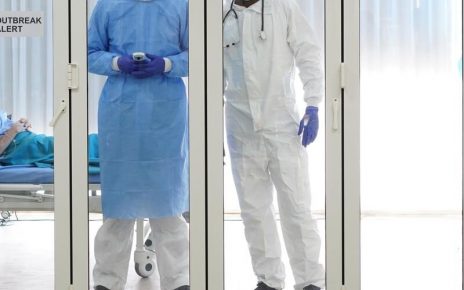Trisha Goddard discusses her breast cancer in 2018
We use your sign-up to provide content in ways you’ve consented to and to improve our understanding of you. This may include adverts from us and 3rd parties based on our understanding. You can unsubscribe at any time. More info
Should numerous cancer lesions grow throughout the body, successful treatment becomes more difficult. This is why at the first signs of cancer, one should get checked over by medical professionals. One warning sign of cancer is persistent pain felt in the armpit, the research and care charity, Breast Cancer Now, pointed out. Breast cancer will affect one in seven women in the UK during their lifetime.
As such, the likelihood you will have a friend, partner, daughter, or colleague who develops the disease is high.
And it must be noted that men are also at risk of developing breast cancer.
The cancerous lesion can lead to a lump or swelling in the breast, upper chest or armpit.
Furthermore, the skin around the breast can begin “puckering or dimpling”.

Other indications of breast cancer may include:
- A change in the colour of the breast – the breast may look red or inflamed
- A nipple change, for example it has become pulled in (inverted)
- Rash or crusting around the nipple
- Unusual liquid (discharge) from either nipple
- Changes in size or shape of the breast.
Breast awareness is essential in order to notice when something is unusual for you.
For instance, women’s breasts go through natural changes during a menstrual cycle, experts at WebMD elaborated.
Breasts can become tender, as well as swell in size and shape in a cyclical manner.

This is because of the “ebb and flow of hormones such as oestrogen and progesterone over the course of your cycle”.
If the size or shape of the breast doesn’t go down after getting your period, for example, it is advisable to book a doctor’s appointment.
In order to examine your own breasts, Breast Cancer Now recommends following the “TLC” acronym.
This means to…
- Touch your breasts: can you feel anything new or unusual?
- Look for changes: does anything look different to you?
- Check any new or unusual changes with a GP.
The NHS stated: “Breast cancer is the most common type of cancer in the UK.”
Mammographic screening involves X-ray images of the breast to identify breast lesions at an early stage.
All women who are between the ages of 50 to 70 should be invited for breast cancer screening every three years.
Right now, the NHS is in the process of extending the programme to some women from the age of 47 and until the age of 73.

Women who attend breast screening appointments can expect to have two X-rays on each breast.
Mammographers, who perform the mammogram, “will be female”, the NHS certified.
All together, the whole appointment should take no more than 30 minutes.
The results of the mammogram will be sent in the post within two weeks of testing.
Source: Read Full Article



